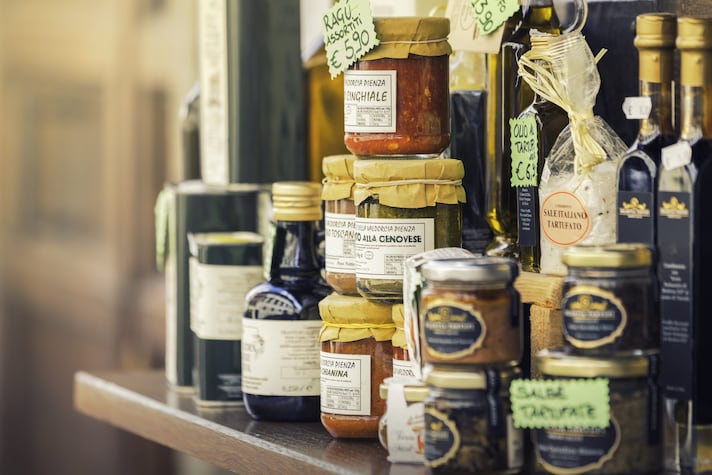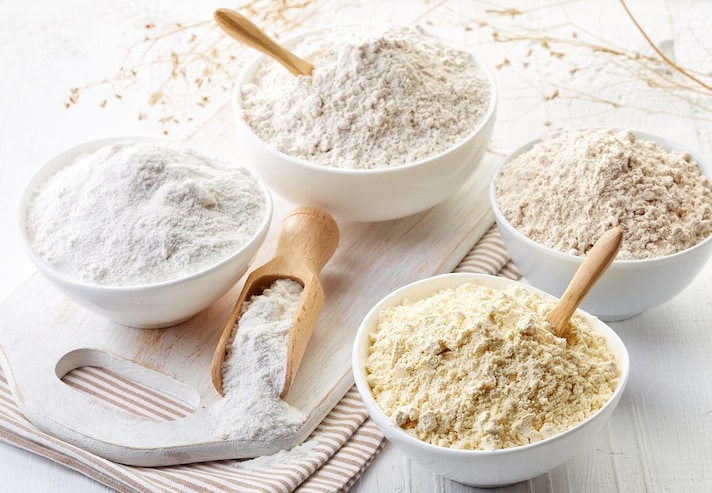
Knowing what you eat is becoming increasingly important for the consumer, who is more interested today than a few years ago in knowing and understanding what a product, especially an industrial one, contains, starting from reading the label. Among the various indications of the ingredients that make up a particular food, those that probably immediately catch the eye are certain acronyms or full names that we don't really understand. These correspond to the additive that has been added to the food to give it a certain appearance, flavor, shelf life, with the aim, generally, of making it more appetizing.
Additives are natural substances (such as citric acid) or synthetic ones used in many products, especially those packaged in grocery stores, from cured meats to soft drinks, including yogurt, sweets and leavened products. Often, however, their presence is judged with a certain suspicion, especially when they hit the headlines as potentially dangerous to health, as in the recent case of aspartame, a sweetener present in various foods and drinks that has created alarmism as it has been assessed as possibly carcinogenic by the WHO (World Health Organization) or glutamate, a flavoring that does not enjoy a good reputation . Are food additives harmless or harmful, and who decides?
What Are Food Additives?
Food additives are not an invention of modernity, as the FDA points out: in the past, for example, to preserve foods, forms of additives were used such as salting meat and fish, adding lemon to prevent the oxidation of various foods and vinegar in preserves. What has been developed thanks to the evolution of technology is an innovation in terms of treatment, efficacy, volumes and food safety. The latter, in particular, is now guaranteed by the supervision of national and international organizations, such as FDA. According to the FDA definition, food additives are referred to as any substance that becomes part of a food product either directly or indirectly during processing, production, or storage. This includes substances added intentionally, such as preservatives or colorings, as well as those that may inadvertently end up in food, like residues from packaging or equipment. Additives must be approved by the FDA as safe for their intended use under the Federal Food, Drug, and Cosmetic Act (FD&C Act). Here's an updated list of the food additives approved by the FDA, as of 2025.

Why Are Additives Used in Foods and Drinks?
At this point their purpose is clear: by law, they can only be used if they are an advantage to the consumer and there is no other way to achieve that result. Precisely depending on the function performed within the food, additives are classified into 27 different categories: among the most common are sweeteners, colorants, preservatives, antioxidants, emulsifiers, acidity regulators, flavor enhancers and also, resistance agents, which guarantee the maintenance of the structure of the food, coating agents, which give brightness and shine and leavening agents, which increase the volume of a dough. From taste to aesthetics, additives serve to maintain the peculiar characteristics of the product unaltered, without intervening on its nutritional values.
Who Determines the Safety of Food Additives?
Ensuring that a food additive poses no health risk to consumers—neither in the short nor long term—is the responsibility of the FDA in the United States, which evaluates the safety of substances used in food. The process involves reviewing all available scientific data, including information on the chemical and biological properties of the additive, its potential toxicity, and estimated human exposure levels. Based on this evaluation, the FDA determines whether the additive is safe for its intended use. For every approved additive, the FDA establishes an Acceptable Daily Intake (ADI), which is defined as the amount of a substance that can be consumed daily over a lifetime without posing any appreciable health risks. This is typically expressed in milligrams of the substance per kilogram of body weight.

The FDA periodically reassesses additives as new scientific evidence emerges, reflecting advancements in toxicology and food science. For example, in 2022, the FDA withdrew its approval of titanium dioxide (a color additive used in foods and supplements), aligning with concerns raised in other regions about its potential to damage DNA. While the FDA sets safety guidelines, any regulatory updates—such as banning or restricting additives—are enacted through U.S. laws and regulations. This approach ensures that food safety assessments remain dynamic and reflect the latest scientific knowledge.
Are Food Additives Harmless or Harmful?
In general, food additives found in everyday products are considered safe, but some are more closely scrutinized than others—particularly nitrites and nitrates, which are commonly used as preservatives in processed meats like sausages and cured products.
Studies have shown that regularly eating processed and cured meats may increase the risk of heart disease and high blood pressure especially due to high levels of sodium, saturated fats, and preservatives like nitrates and nitrites. According to the American Cancer Society (ACS), these compounds can undergo chemical changes in the body, converting into nitrosamines, which are potentially carcinogenic. Long-term, excessive consumption of nitrites has been linked to an increased risk of stomach and esophageal cancers. In the U.S., the FDA regulates the use of nitrites and nitrates in foods, setting limits to minimize risks, though debates continue about the safety of these substances, particularly in processed meats.
If you’re looking for healthier (and still satisfying!) alternatives, try lean proteins like grilled chicken or turkey breast, fresh tuna, or plant-based options like hummus, lentil patties, or even thinly sliced roasted veggies. For a charcuterie board upgrade, swap in some smoked salmon, avocado, or marinated tofu for variety without sacrificing taste.
Food labels can also cause confusion, especially when it comes to understanding the origin of additives. For instance, consumers trying to determine if a product is vegan may be surprised to learn that some color additives, like carmine, are derived from insects (such as cochineal). Additionally, individuals with allergies or intolerances need to carefully examine ingredient lists to avoid reactions, as not all additives are well-labeled for dietary restrictions.
;Resize,width=767;)
